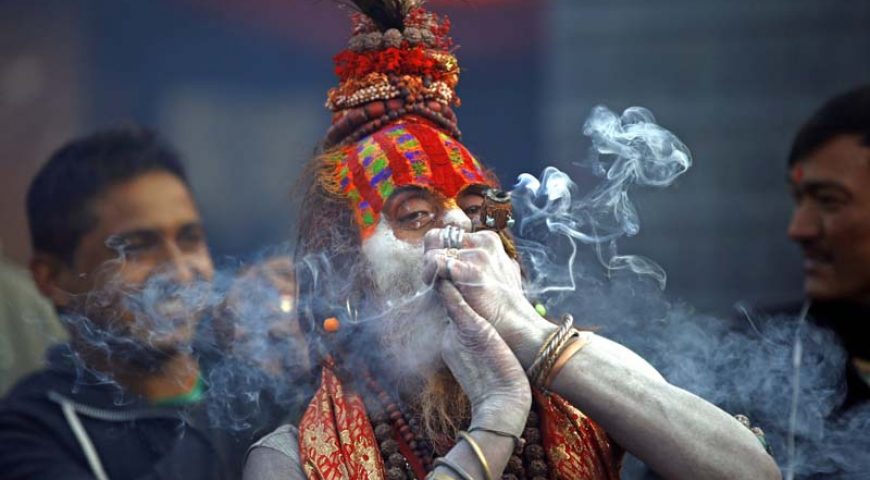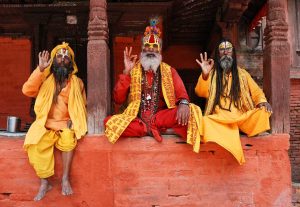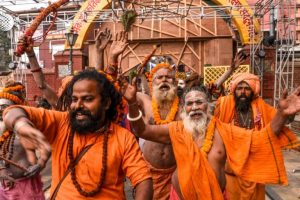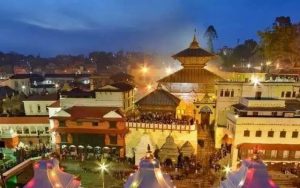
Maha Shivratri
Mahashivaratri, also known as “Night of the Shiva”, is observed every year on the 14th day of the waning moon in the Nepali month of Falgun. This festival is largely celebrated by people following Hinduism. According to Hindu mythology, this festival is celebrated for the life of Lord Shiva, one of the triumvirates of the Hindu pantheon, who is believed to have drunk poison to save humankind and gods from annihilation. Shivaratri is one of the four nights known as Kaalratri, Moharatri, Sukharatri and is regarded as one of the greatest festivals in the holy scriptures of the Hindus—the Puranas.
During this day, Pashupatinath Temple witnesses a large surge of Sadhus (holy sage) and devotees on the premises to offer their worship. Also, the devotees all over the country celebrate the great festival of Mahashivaratri by worshipping Lord Shiva at various rivers, ponds and temples. The religious belief is that if one offers milk, Dhaturo (a kind of intoxicating plant) and ‘Belpatra’ to Lord Shiva and observes night-long fasting, he/she will receive divine blessings.

The History of Mahashivaratri
In Nepal, the festival is celebrated on the 14th day of the Magha month according to the Hindu Lunar calendar. The name ‘Maha Shivaratri’ translates to ‘Great Night of Shiva’, which is celebrated in honor of the confluence of Shiva and Shakti. It also marks the night when Lord Shiva performed ‘Tandav’, a dance form.
There are several reasons behind the celebration of Maha Shivaratri but the famous of them all is the marriage of Shiva and Shakti. After Sati’s self-immolation, Lord Shiva went into seclusion at the Himalayas and underwent deep penance.
However, Sati was reborn as Parvati (Shakti) in Lord Himalaya’s family. The goddess then underwent severe penance to win back Lord Shiva. With her deep devotion & love and the persuasion of sages, Shiva left asceticism to marry Parvati. Lord Shiva & Parvati married a day before Amavasya in Phalgun month (as per the Hindu calendar). This day of love and reunion is celebrated as Maha Shivaratri, every year.

Rituals and beliefs
Mainly related to the night, devotees stay up the entire night chanting ‘Om Namah Shivaya’ and ‘Mahamritunjaya’, praying for the victory of light over darkness along with special pujas carried out all night long. They believe Lord Shiva to help them end bad habits and change their lives for the better. Devotees are also known to fast throughout this auspicious night and day.
Important Tips for Visitors
- You might have to stand in a long queue for hours to gain entry into the temple. Keep in mind that there might be alternate entrances to the temple, with shorter lines. It is recommended to find out about the possible points of entry and choose a suitable one.2. Do not go too close to the sadhus as it might agitate them. There have been incidents when they have thrown ashes at the crowds. It is recommended to stay at least a few feet away.3. You have to understand that Shivratri attracts enormous crowds that can sometimes lead to an atmosphere of chaos. Take care of all your belongings and stay together, if travelling in a group. In case you lose anything, you can visit the temple’s lost and found section.
4. In case you get lost or misplace a fellow traveller, then you can announce for them on the temple speakers. Alternatively, you can find a police person and seek help.
Where to Celebrate Shivratri in Nepal?
Celebrated with utmost enthusiasm and zeal, Shivratri is observed in all Shiva Temples across the country. Kathmandu is the leading site of these festivities, with the most important rituals and ceremonies happening at the Pashupatinath Temple.

